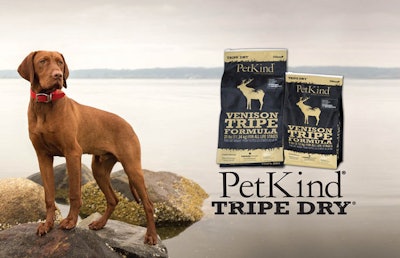
A recent study on whether consumers will accept food products made from discarded ingredients could have implications and lessons for pet food. That may be particularly true for pet food ingredients such as by-products, often vilified by bloggers, activists and even pet food companies, despite the fact that these ingredients are highly nutritious, bioavailable and palatable to cats and dogs.
As reported on FoodIngredientsFirst.com, the study aimed to determine if human food products made from surplus ingredients that otherwise would be wasted — what the researchers, a team of professors and graduate students from Drexel University, called value-added surplus products (VASP) — might be accepted by consumers if marketed in a way that resonated with them. The premise was that such acceptance could be a potential solution to problems like food waste and insecurity, ingredient scarcity and environmental concerns.
“There is an economic, environmental and cultural argument for keeping food, when possible, as food and not trash,” said Jonathan Deutsch, PhD, professor in Drexel’s Center for Food and Hospitality Management. “Converting surplus foods into value-added products will feed people, create opportunities for employment, entrepreneurship and lower the environmental impact of wasted resources.”
Unique, upcycled, altruistic food products
The study included three components intended to understand US consumers’ decision-making when considering products made from ingredients “destined to be dumped.” First, the researchers presented descriptions for products in three categories — conventional, organic and VASP — with four products per category.
“Participants felt that value-added surplus products were more helpful to the environment than conventional foods, but less helpful when compared to organic foods,” said the FoodIngredientsFirst.com report. “The results demonstrated that participants clearly identified value-added foods as a unique category with unique perception, separate from organic and conventional categories.”
For the second component, the research team tested nine product labels for branding VASP foods: upcycled, recycled, upscaled, rescaled, reprocessed, reclaimed, up-processed, resorted and rescued. The consumers preferred upcycled, followed by reprocessed. (Interestingly, Deutsch had previously created what he called upcycled products with the Drexel Food Lab, the report said.)
Finally, the researchers asked the study participants whether the benefits of a VASP for themselves or others influenced their feelings about the product. Most of the participants said that consuming VASPs would generate greater benefits to others than to themselves.
Implications for pet food: DDGs, meat by-products
The report doesn’t describe the products presented in the study, though it does allude to a “granola bar made from spent brewing grains” and a “relish made from vegetables apparently unfit for the supermarket.” (The article also mentions an actual product called Rescued Relish, made from excess produce that can’t be used by Philabundance, an anti-hunger organization based in Philadelphia, as is Drexel.)
The spent brewing grains immediately bring to mind dried distillers grains (DDGs), leftover materials from the production of ethanol that have been used as pet food ingredients — and sometimes unfairly demonized. Research on a new generation of DDGs is showing that they can be very palatable to cats and are also high in protein and fiber, while offering an alternative for pet foods aimed at decreasing or eliminating pet allergies or intolerance to other ingredients. On top of all that, they require little additional processing, energy use or raw materials, and they aren’t used at all for human food.
“Whether the message is avoidance [of certain ingredients] or to save the planet and promote sustainability and food security, I think we have an opportunity to play in that category,” said Greg Aldrich, PhD, pet food program coordinator at Kansas State University, whose grain scientists have been studying this next generation of DDGs.
It may depend on how they are marketed as ingredients — to pet food companies as well as to consumers. That’s the case for meat by-products as well. With the pet food industry competing directly with human food for animal-based protein ingredients, these organ and intestinal meat components are perfect for pet food and the pets that eat it, and they offer a very available and sustainable alternative. The issue is that many consumers won’t even consider buying pet foods with meat by-products because they’ve been led to believe the ingredients are unhealthy, unsafe and poor quality, even roadkill.
Some industry experts and pet food companies are setting out to change those perceptions. Ryan Yamka, PhD, founder of Luna Science and Nutrition and past R&D executive with several pet food companies, has posted charts showing how the protein and amino acid digestibility of meat and meat by-product meals ranks favorably with that of whole meats (as does corn gluten meal, for that matter), and that some of those meals have higher amino acid crude protein levels on an as-fed basis.
Yamka has also noted a resurgence in declaring the use of meat by-products. “New companies have found novel ways to market and glamorize these ingredients by calling them out individually,” he wrote. “While at a recent trade show, I saw companies calling out green tripe* (stomach lining), livers, gizzards, lung and blood as ingredients in their foods or treats. I even saw dehydrated rabbit feet, duck heads, duck feet, turkey tails and turkey fries. I guess it all comes down to marketing sometimes!”
Opportunities for pet food marketers
Perhaps Yamka, and the companies he references, are onto something. Can rebranding of by-products, or even positioning them as novel or "upcycled," convince consumers that they’re very healthy and yummy for their pets, while also being good for the earth and the people inhabiting it?
Food waste is a huge issue globally; in the US alone, households throw away an estimated 80 billion pounds a year, said the FoodIngredientsFirst.com report, while more than 42 million Americans experience food insecurity, according to Drexel University. So, using ingredients for pet food that don’t take from the human food supply or might otherwise go unused may resonate with some consumers.
Millennials, now the largest demographic of pet owners in the US, profess to care about causes and sustainability, and even to be willing to pay more for sustainable products or ones from brands that can prove they are good corporate citizens. In fact, in its Pet Food in the US, 13th Edition report, Packaged Facts identified promoting sustainability and corporate responsibility as one of nine top opportunities for pet food companies in 2018.
If nothing else, VASPs may offer a path to the “next big thing” for premium pet food. The Drexel researchers studying them for human foods believe that selling them could prove lucrative. “Depending upon how you communicate such products, they might also be able to fetch a price premium, like those afforded to organic foods,” said Rajneesh Suri, PhD, professor in the LeBow College of Business.
*Tripe used as ingredient in up to 2 percent of dog, cat foods
Tripe, an edible lining from the stomachs of various farm animals, appears on the ingredient list of 2 percent of wet dog foods in the US, and nearly the same amount (1.92 percent) for wet cat foods, according to the Dog and Cat Food Ingredient Center. While these are low levels — and they’re even lower for dry dog and cat foods or treats — their presence still shows that such a novel protein ingredient, one that technically qualifies as a meat by-product, can succeed in the marketplace. With the proper marketing, usage levels could increase.


















